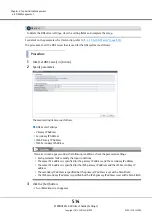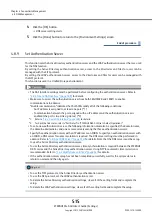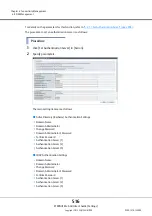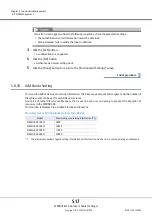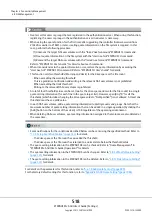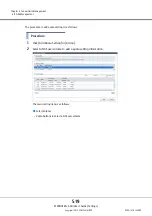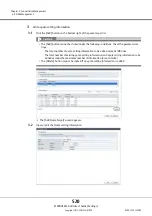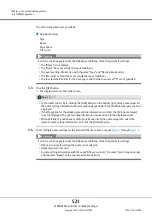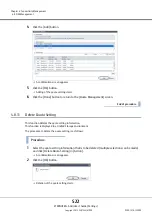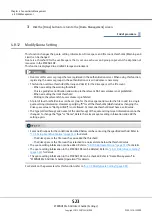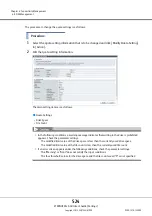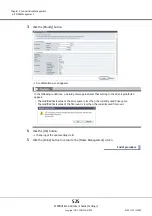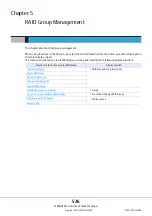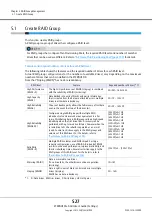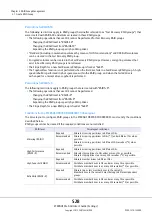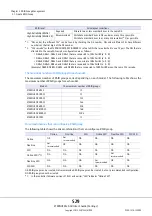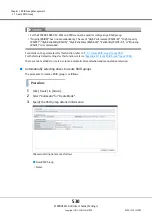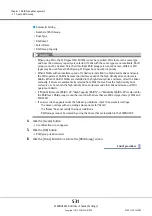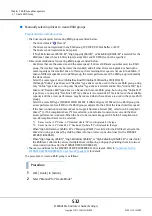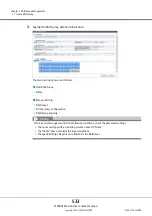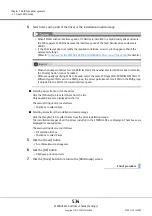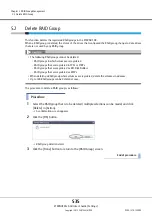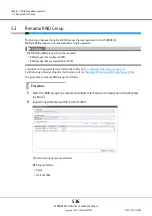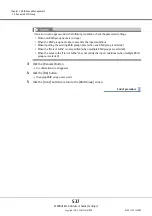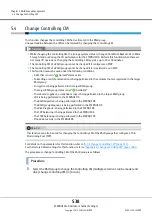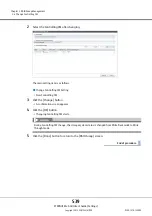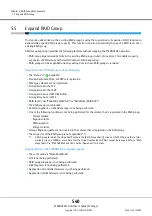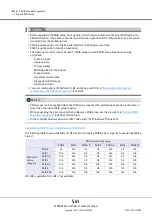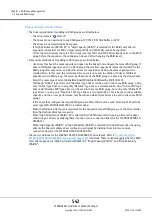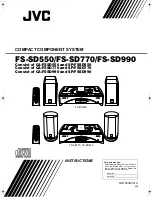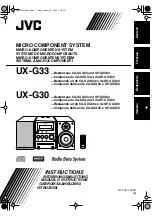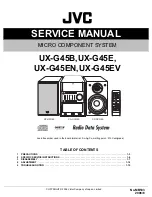
Chapter 5 RAID Group Management
5.1 Create RAID Group
ETERNUS Web GUI User’s Guide (Settings)
Copyright 2015 FUJITSU LIMITED
P2X0-1270-13ENZ0
528
Restrictions for RAID6-FR
The following restrictions apply to RAID groups (hereinafter referred to as "Fast Recovery RAID groups") that
were created with RAID6-FR and volumes created in those RAID groups.
•
The following operations that use LDE cannot be performed for Fast Recovery RAID groups.
-
Changing the RAID level to "RAID6-FR"
-
Changing the RAID level from "RAID6-FR"
-
Expanding the RAID group capacity by adding drives
•
"Standard (including concatenation volumes by means of LUN Concatenation)" and ODX Buffer volumes
can be created in the Fast Recovery RAID group.
•
Encrypted volumes can be created in the Fast Recovery RAID groups. However, encrypting volumes that
exist in Fast Recovery RAID groups is not allowed.
•
The Stripe Depth for a new Fast Recovery RAID group is fixed at "64KB".
•
The Copybackless function is not performed when the first drive fails in a Fast Recovery RAID group. A high-
speed rebuild is performed in a hot spare area within the RAID group, and when the failed drive is
exchanged for a normal drive, copyback is performed.
Restrictions for RAID5+0
The following restrictions apply to RAID groups that are created with "RAID5+0".
•
The following operations that use LDE cannot be performed.
-
Changing the RAID level to "RAID5+0"
-
Changing the RAID level from "RAID5+0"
-
Expanding the RAID group capacity by adding drives
•
The Stripe Depth for a new RAID group is fixed at "64KB".
Conditions for the ETERNUS DX8700 S3/DX8900 S3 drive layout
The drive layout to configure RAID groups in the ETERNUS DX8700 S3/DX8900 S3 must satisfy the conditions
described below.
RAID groups cannot be created if the required conditions are not satisfied.
RAID level
Drive layout conditions
Mirroring (RAID1)
Required
Allocate mirroring pair drives to different DEs.
Recommended
Allocate mirroring pair drives to DEs (*1) under different CEs when
possible.
Allocate mirroring pair drives to different SAS cascades (*2) when
possible.
High Performance
(RAID1+0)
Required
Allocate mirroring pair drives to different DEs.
Recommended
Allocate striping drives to DEs under as many CEs as possible.
Allocate striping drives to as many SAS cascades (*2) as possible.
High Capacity (RAID5)
Required
Allocate member drives to different DEs.
Recommended
Distribute member drives to DEs under as many CEs as possible.
Distribute member drives to as many SAS cascades (*2) as possible.
Reliability (RAID5+0)
Required
Allocate two or less member drives to the same DE.
Member drives in the same DE must belong to different redundant
groups.
Recommended
Distribute member drives to DEs under as many CEs as possible.
Distribute member drives to as many SAS cascades (*2) as possible.
Summary of Contents for Eternus DX200F
Page 2: ...This page is intentionally left blank ...
Page 1082: ......

